
Koh Kong: Hidden Gem of Cambodia
Discover Koh Kong: Cambodia's hidden gem, offering lush rainforests, pristine beaches, and rich cultural experiences, perfect for nature lovers and adventure seekers.
Koh Kong is a small but vibrant city located in the southwestern part of Cambodia. It is well-known for its stunning natural beauty, offering a perfect mix of lush rainforests, pristine beaches, and tranquil rivers. The city serves as a gateway to the Cardamom Mountains, one of Southeast Asia's most important biodiversity hotspots. Visitors can explore the mountains' rich flora and fauna, with opportunities for trekking, bird watching, and even encountering elusive wildlife such as the clouded leopard and Asian elephant. The coastal areas of Koh Kong are equally captivating. The city is surrounded by a series of picturesque islands and crystal-clear waters, making it a paradise for beach lovers and water sports enthusiasts. The Koh Kong Island, in particular, boasts powdery white sands and azure waters, ideal for swimming, snorkeling, and sunbathing. Another must-visit spot is the Tatai River, where tourists can enjoy kayaking or take a boat trip to the scenic Tatai Waterfall. Koh Kong also offers a glimpse into Cambodia's rich cultural heritage. The city is home to several traditional Cambodian markets where visitors can immerse themselves in local life and savor delicious Khmer cuisine. Additionally, the nearby Peam Krasaop Wildlife Sanctuary provides an opportunity to explore mangrove forests and understand the importance of conservation efforts in the region.
Local tips in Koh Kong
- Best time to visit is from November to April when the weather is dry and pleasant.
- Local currency is the Cambodian Riel, but US dollars are widely accepted.
- Wear comfortable shoes for trekking in the Cardamom Mountains.
- Don't miss visiting the local markets for authentic Khmer food.
- Book boat trips in advance to secure your spot, especially during peak season.
Koh Kong: Hidden Gem of Cambodia
Koh Kong is a small but vibrant city located in the southwestern part of Cambodia. It is well-known for its stunning natural beauty, offering a perfect mix of lush rainforests, pristine beaches, and tranquil rivers. The city serves as a gateway to the Cardamom Mountains, one of Southeast Asia's most important biodiversity hotspots. Visitors can explore the mountains' rich flora and fauna, with opportunities for trekking, bird watching, and even encountering elusive wildlife such as the clouded leopard and Asian elephant. The coastal areas of Koh Kong are equally captivating. The city is surrounded by a series of picturesque islands and crystal-clear waters, making it a paradise for beach lovers and water sports enthusiasts. The Koh Kong Island, in particular, boasts powdery white sands and azure waters, ideal for swimming, snorkeling, and sunbathing. Another must-visit spot is the Tatai River, where tourists can enjoy kayaking or take a boat trip to the scenic Tatai Waterfall. Koh Kong also offers a glimpse into Cambodia's rich cultural heritage. The city is home to several traditional Cambodian markets where visitors can immerse themselves in local life and savor delicious Khmer cuisine. Additionally, the nearby Peam Krasaop Wildlife Sanctuary provides an opportunity to explore mangrove forests and understand the importance of conservation efforts in the region.
When is the best time to go to Koh Kong?
Iconic landmarks you can’t miss
Tatai Waterfall
Experience the breathtaking beauty and tranquility of Tatai Waterfall, a hidden gem perfect for nature lovers and adventure seekers alike.
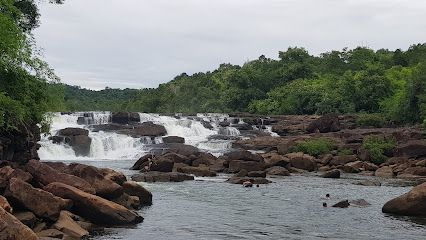
Peam Krasaop Wildlife Sanctuary
Discover the natural wonders of Peam Krasaop Wildlife Sanctuary, where diverse ecosystems meet rich wildlife in the heart of Cambodia.
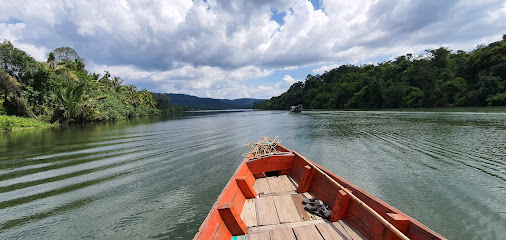
Khun Chhang Historical Stupa
Discover the serene beauty and rich history of the Khun Chhang Historical Stupa in Mondol Seima, a hidden gem of Cambodia's cultural heritage.
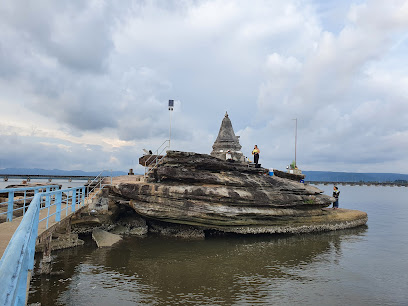
Nathy Kohkong Hotel
Discover comfort and convenience at Nathy Kohkong Hotel in Krong Khemara Phoumin, with modern amenities and a welcoming atmosphere for every traveler.
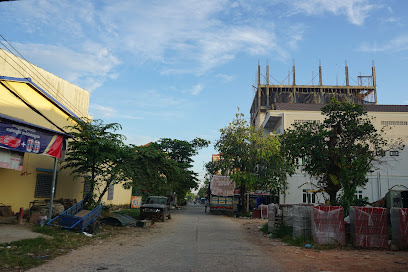
ស្ពានយោល ព្រៃកោងកាង
Embark on an unforgettable hiking adventure in Krong Khemara Phoumin, where nature's beauty and tranquility await every visitor.
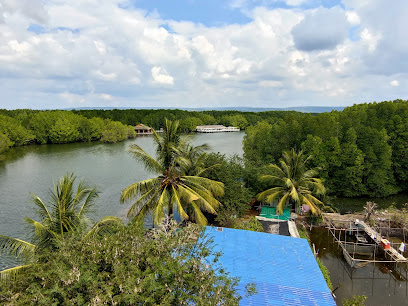
Mangrove Sanctuary Resort
Immerse yourself in the serene beauty of Koh Kong at Mangrove Sanctuary Resort, where nature and comfort harmoniously converge for an unforgettable getaway.
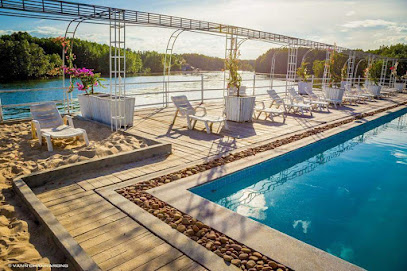
Koh Kong Market
Experience the vibrant culture and local flavors at Koh Kong Market, a bustling shopping destination in Krong Khemara Phoumin, Cambodia.

Koh Kong Beach
Discover the serene beauty of Koh Kong Beach, a tropical paradise in Cambodia, perfect for relaxation, adventure, and cultural exploration.
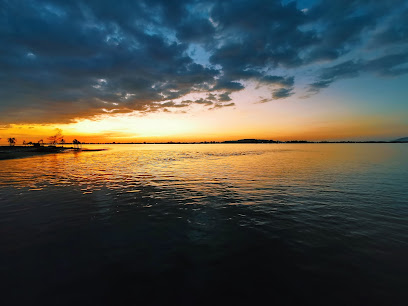
Koh Kong Krav
Experience the serene beauty and rich culture of Koh Kong Krav, a hidden gem in Cambodia perfect for nature lovers and cultural enthusiasts alike.
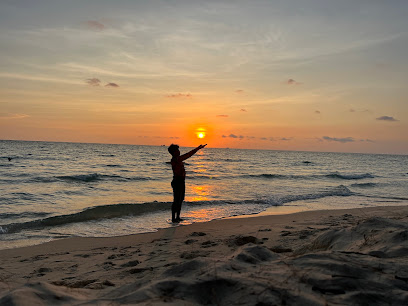
Unmissable attractions to see
Tatai Waterfall
Explore the stunning Tatai Waterfall, a breathtaking natural attraction in Cambodia offering serenity and adventure amidst lush tropical surroundings.
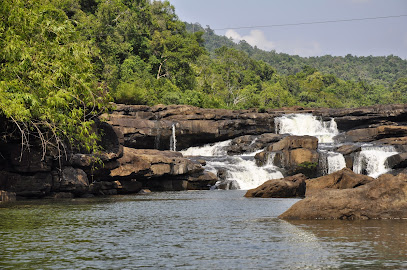
Peam Krasaop Wildlife Sanctuary
Explore the natural wonders of Peam Krasaop Wildlife Sanctuary, a biodiversity hotspot in Cambodia perfect for wildlife enthusiasts and nature lovers.
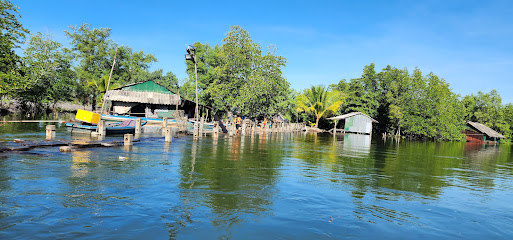
Khun Chhang Historical Stupa
Explore the serene beauty and cultural significance of the Khun Chhang Historical Stupa in Mondol Seima, a hidden gem of Cambodia's historical heritage.
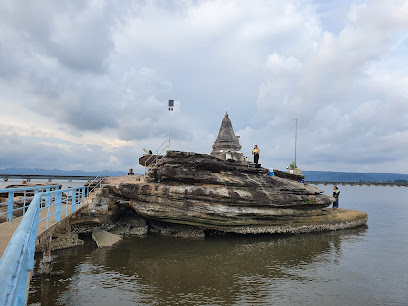
ស្ពានយោល ព្រៃកោងកាង
Explore the stunning hiking trails of Krong Khemara Phoumin, where nature meets adventure in a breathtaking Cambodian landscape.
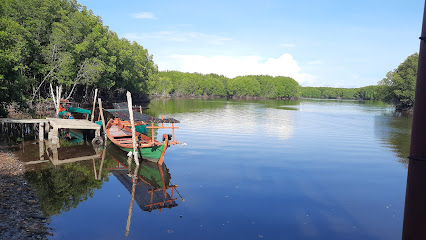
Koh Kong Beach
Experience the tranquil beauty of Koh Kong Beach, a hidden paradise in Cambodia's Gulf of Thailand, perfect for relaxation and adventure.
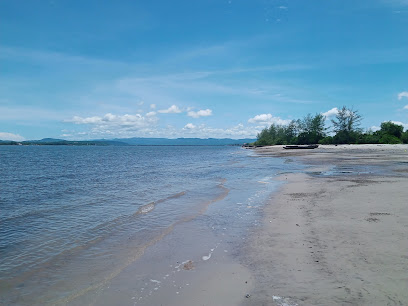
Koh Kong Krav
Explore the natural beauty and rich culture of Koh Kong Krav, a must-visit tourist attraction in Cambodia's stunning landscapes.
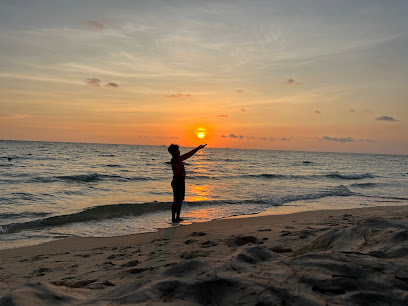
koh kong krav
Explore the breathtaking landscapes and rich biodiversity of Koh Kong Krav, a hidden gem in Cambodia's natural paradise.
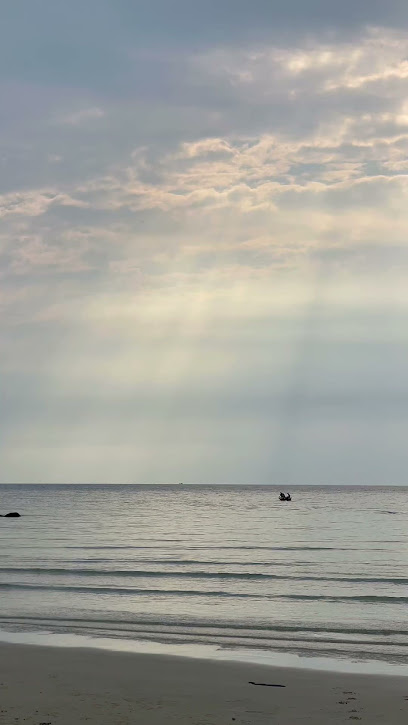
Essential places to dine
White Rose Guesthouse & Restaurant 餐厅
Discover culinary delights at White Rose Guesthouse & Restaurant on Koh Touch Beach – where flavor meets paradise!
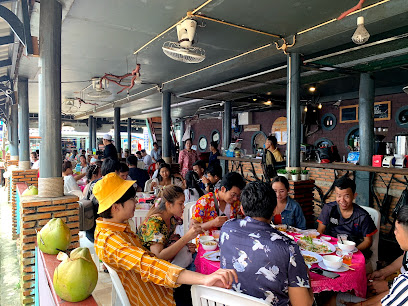
By The Sea
Indulge in exquisite seafood and local delicacies at By The Sea while enjoying breathtaking ocean views in Preah Sihanouk.
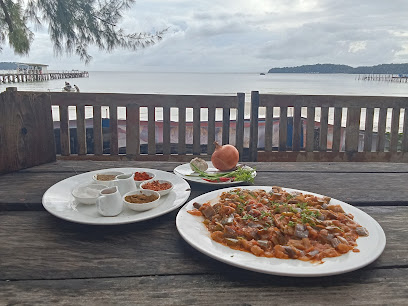
Lily's Riverhouse
Experience serene dining and cozy accommodations at Lily's Riverhouse in Koh Rong – your ideal getaway amidst nature's beauty.
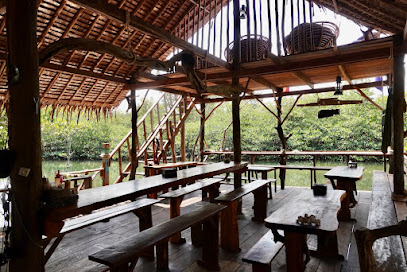
Koh Touch Restaurant
Experience authentic Cambodian cuisine at Koh Touch Restaurant in Preah Sihanouk - where flavor meets culture in a vibrant setting.
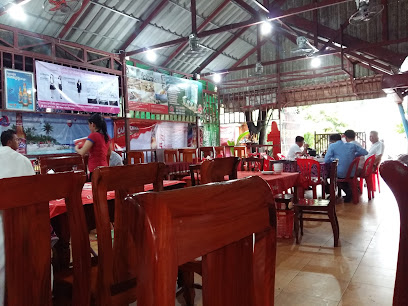
I love pizza
Savor authentic Italian pizzas at I Love Pizza in Krong Khemara Phoumin – where every slice tells a delicious story.
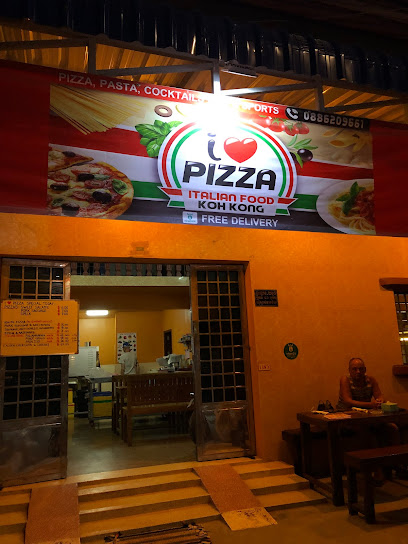
Young Wild and Free - beach bar restaurant and bungalows
Discover tranquility at Young Wild and Free - your ultimate beach bar restaurant and bungalow retreat in Krong Khemara Phoumin.

Kolab Kaoh Kong Restaurant add home
Experience authentic Cambodian flavors at Kolab Kaoh Kong Restaurant in Krong Khemara Phoumin - delicious food awaits!
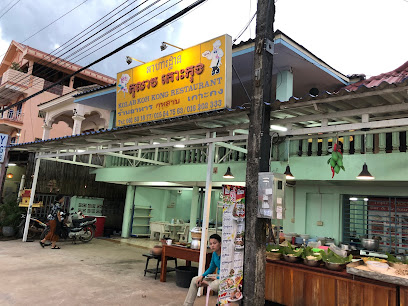
Mr. Nice Restaurant Bar and Tours Service
Experience authentic Asian flavors at Mr. Nice Restaurant Bar and Tours Service in Preah Sihanouk - a culinary gem for tourists.
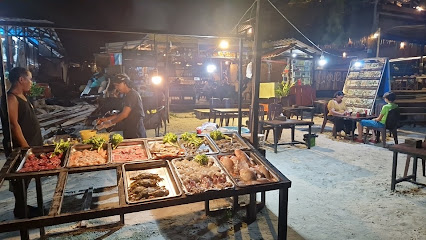
Aussie Le Thai Restaurant and Sports Bar
Discover authentic Thai flavors at Aussie Le Thai Restaurant and Sports Bar in Preah Sihanouk - where delicious cuisine meets lively entertainment.
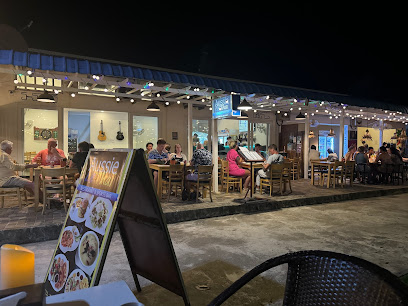
Anon Café & Restaurant
Experience the vibrant flavors of Cambodia at Anon Café & Restaurant in Krong Khemara Phoumin, where culinary creativity meets warm hospitality.
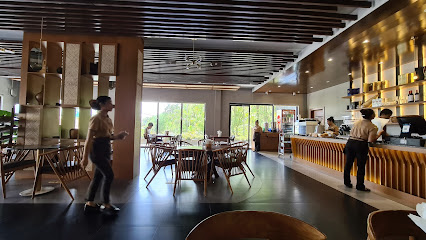
Cafe Sushi
Experience exquisite sushi amidst breathtaking views at Cafe Sushi on Long Set Beach in Koh Rong.
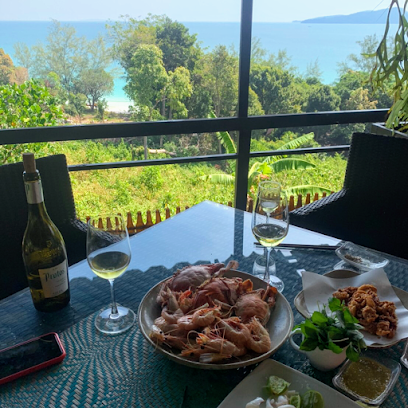
The Moon Restaurant
Experience authentic Cambodian cuisine at The Moon Restaurant on Soksan Beach, where breathtaking views meet delightful flavors.
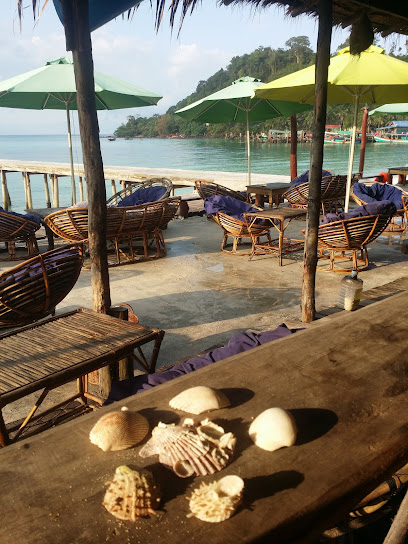
Buffalo Restaurant
Experience delightful dining at Buffalo Restaurant on Koh Rong's Main Pier with breathtaking ocean views and diverse culinary offerings.
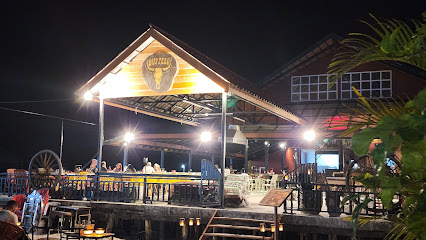
Thmorda Crab House
Discover fresh seafood delights at Thmorda Crab House in Mondol Seima - where authentic Thai flavors meet local hospitality.
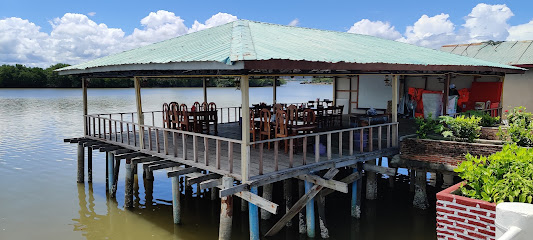
Natura Restaurant
Experience exquisite dining at Natura Restaurant on Sok San Beach – where local flavors meet stunning seaside views.
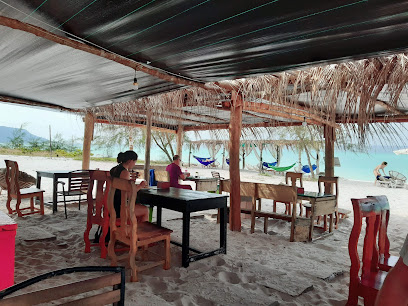
Markets, malls and hidden boutiques
Koh Kong Market
Explore Koh Kong Market - A vibrant shopping destination offering local delicacies, unique crafts, and a taste of authentic Cambodian culture.
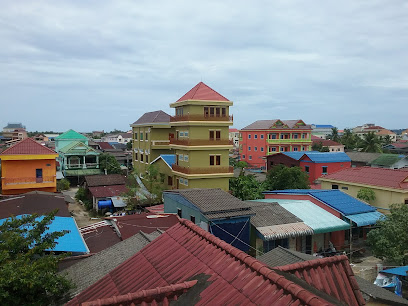
MARTIM MART 999
Discover the authentic flavors of Cambodia at MARTIM MART 999, your go-to grocery store in Krong Khemara Phoumin.
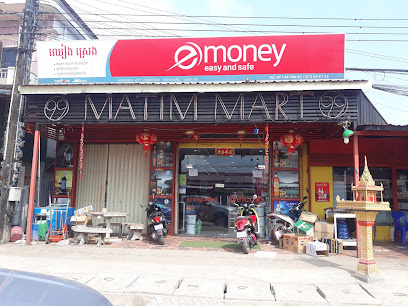
Koh Kong Tiger Beer Distributor
Explore the Koh Kong Tiger Beer Distributor, a vibrant shopping destination in Krong Khemara Phoumin, offering a taste of local culture and products.
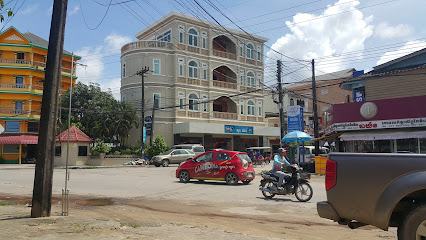
ហាងលក់សំភារះ
Explore a vibrant clothing store in Krong Khemara Phoumin, offering unique local fashion and a cultural shopping experience.
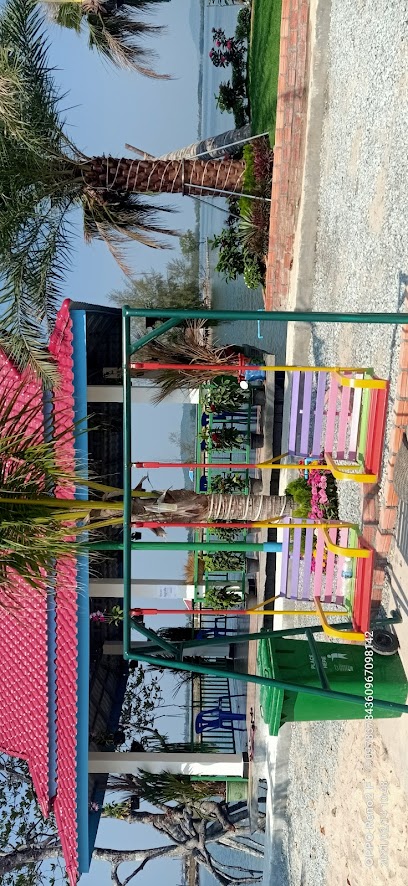
Sam Virak Electronics Shop
Discover the best in electronics at Sam Virak Electronics Shop in Krong Khemara Phoumin, where quality meets affordability.

Angkor Beer ( Koh kong distributor )
Explore Angkor Beer in Krong Khemara Phoumin for a vibrant shopping experience filled with local culture and unique finds.
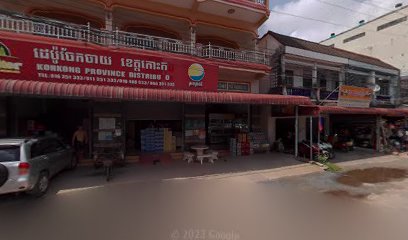
7-Eleven Koh Kong (PTT)
Explore the best of convenience shopping at 7-Eleven Koh Kong, your ultimate stop for snacks, drinks, and travel essentials in Krong Khemara Phoumin.
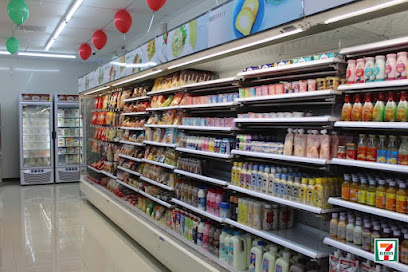
Kok Kong center city
Experience the essence of Cambodian coffee culture at Kok Kong center city, a welcoming coffee shop in the heart of Krong Khemara Phoumin.
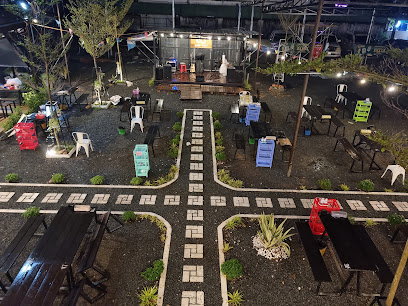
SN STORE
Explore SN STORE in Krong Khemara Phoumin for unique clothing that reflects Cambodia's vibrant culture and contemporary fashion trends.
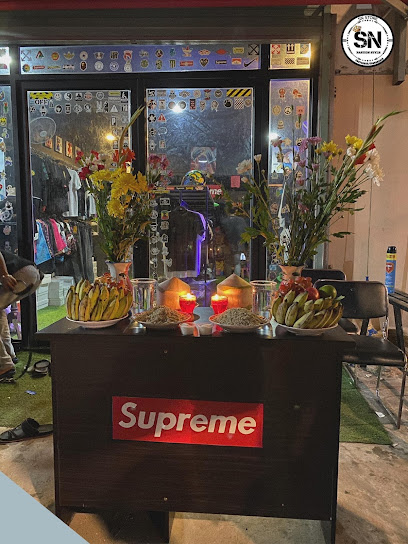
យីវណ្ណា លក់គ្រឿងអលង្ការ
Explore exquisite jewelry and handcrafted treasures at យីវណ្ណា in Krong Khemara Phoumin - a reflection of Cambodian artistry and culture.

Onthespringday.store
Explore the vibrant fashion scene at Onthespringday.store in Krong Khemara Phoumin, where unique clothing and local culture come together.
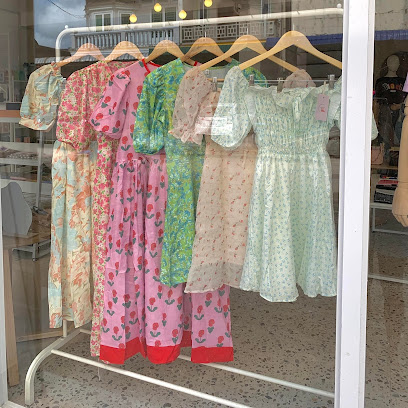
KCT Sweet Home
Discover the essence of Cambodian craftsmanship at KCT Sweet Home, a charming home goods store in Krong Khemara Phoumin.
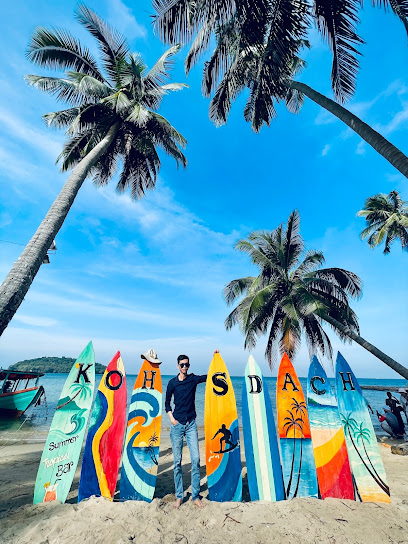
Heng Try Shop
Discover unique handcrafted treasures and local products at Heng Try Shop in Krong Khemara Phoumin, a perfect stop for authentic Cambodian souvenirs.
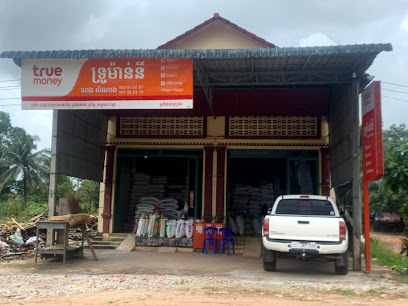
ចែលី Online Shop
Explore the vibrant fashion scene at ចែលី Online Shop in Krong Khemara Phoumin, where local craftsmanship meets modern style.
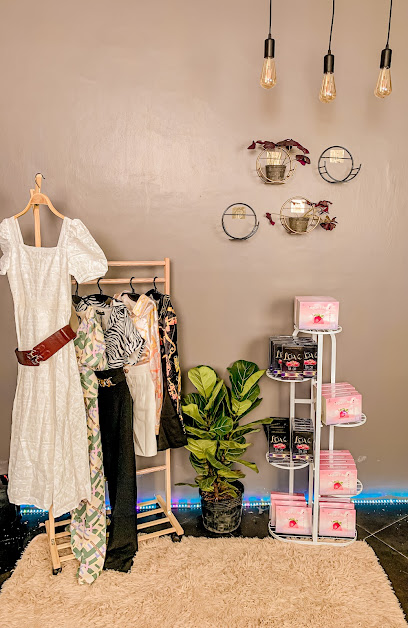
កញ្ញាចាប់ឆាយ
Discover the essence of Cambodian fashion at កញ្ញាចាប់ឆាយ, a clothing store in Krong Khemara Phoumin offering unique, cultural styles and modern trends.
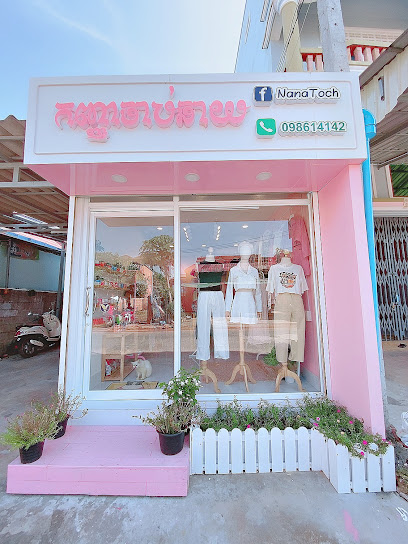
Essential bars & hidden hideouts
Young Wild and Free - beach bar restaurant and bungalows
Discover the perfect beach getaway at Young Wild and Free, where coastal charm meets delicious cuisine in Krong Khemara Phoumin.

Anon Café & Restaurant
Experience the vibrant flavors of Krong Khemara Phoumin at Anon Café & Restaurant, where local and international cuisine come together wonderfully.
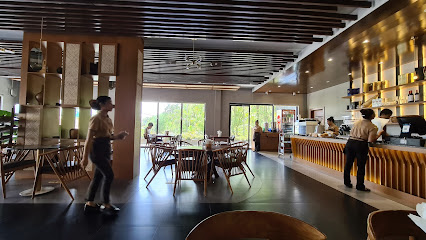
Mlob Sbov Koh Kong Restaurant
Experience the vibrant flavors of Cambodia at Mlob Sbov Koh Kong Restaurant, where delicious food meets fun karaoke entertainment.
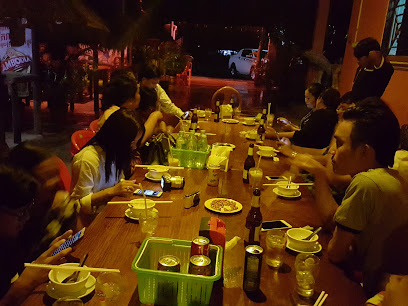
Bopha Happy Night Bar
Experience the vibrant nightlife at Bopha Happy Night Bar in Krong Khemara Phoumin, a perfect blend of fun, music, and refreshing drinks.
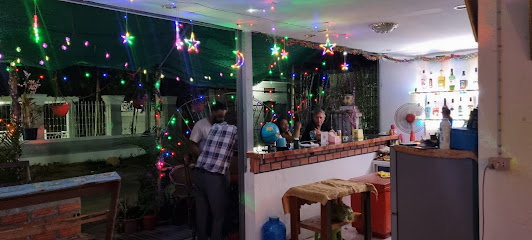
Berry Pub
Discover the vibrant nightlife of Krong Khemara Phoumin at Berry Pub, where great drinks and a lively atmosphere await.
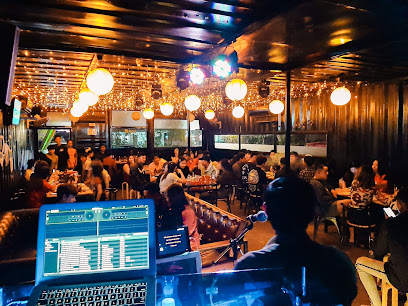
Rene's Pasta Bar & Guesthouse
Discover the flavors of Cambodia and Italy at Rene's Pasta Bar & Guesthouse, a culinary gem in Krong Khemara Phoumin.
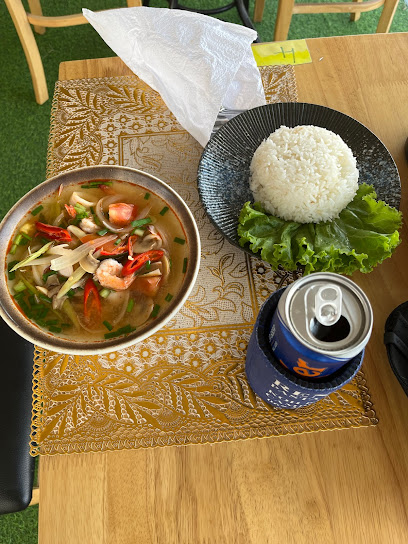
Mr 42 restaurant
Discover the vibrant flavors of Mr 42, a grill restaurant in Krong Khemara Phoumin offering a lively atmosphere and delicious grilled dishes.
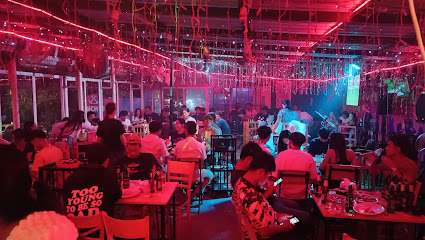
Lin's Restaurant (ex Fat Sam's)
Experience the vibrant culinary scene at Lin's Restaurant in Koh Kong, where local flavors meet international cuisine in a charming setting.
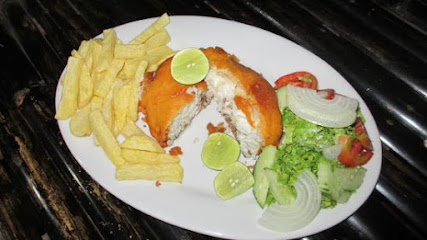
Monkey Bar Koh Kong
Experience the best of local cuisine and vibrant nightlife at Monkey Bar Koh Kong, a must-visit destination for every traveler in Krong Khemara Phoumin.

23 Koh Kong
Experience the best of Western cuisine in Krong Khemara Phoumin at 23 Koh Kong, where every dish is crafted to perfection.
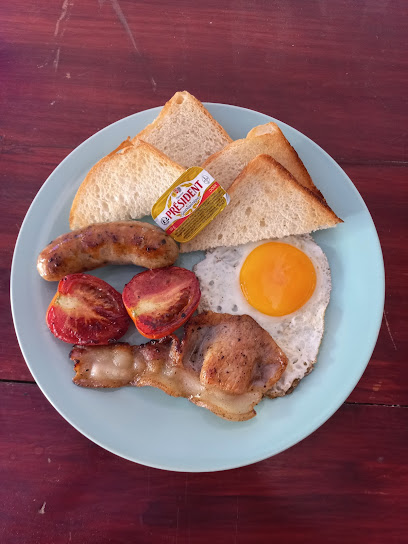
Koh kong KTV
Experience the thrill of karaoke at Koh Kong KTV, a vibrant bar where music and fun come alive in the heart of Koh Kong.
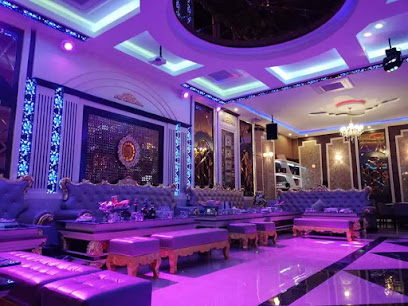
Monkey Town Bar kohkong II
Experience vibrant nightlife and authentic Cambodian culture at Monkey Town Bar in Krong Khemara Phoumin, a must-visit for travelers.
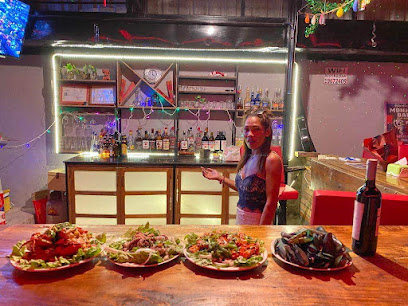
MR.31 SKY BAR
Experience the vibrant nightlife and exquisite seafood at MR.31 Sky Bar in Krong Khemara Phoumin, where unforgettable moments await.
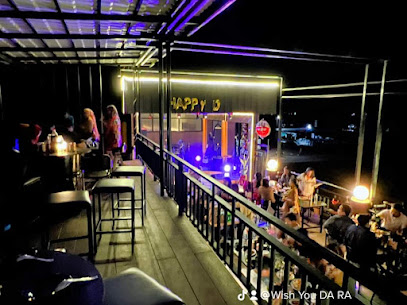
Chamber Pub
Experience the vibrant nightlife at Chamber Pub in Krong Khemara Phoumin, where local flavors and a cozy atmosphere await.
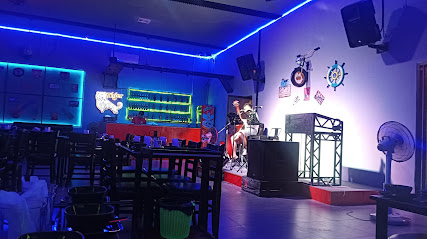
តាំងយូស្នេហ៍
Discover the Joy of Singing and Socializing at តាំងយូស្នេហ៍ Karaoke Bar in Krong Khemara Phoumin, Cambodia.
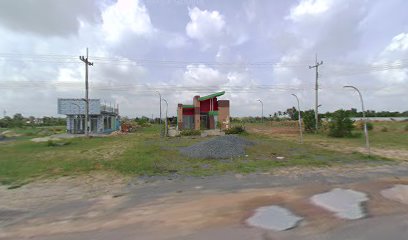
Local Phrases
-
- Helloសួស្តី
[suostei] - Goodbyeលាស់ហើយ
[leah hay] - Yesបាទ
[baat] - Noទេ
[te] - Please/You're welcomeសូមហើយ
[som hay] - Thank youសូមអរគុណ
[som arkoun] - Excuse me/Sorryសូមទោស
[som toh] - How are you?អ្នកសុខសប្បាយបានយ៉ាងម៉ោង?
[nak sok sabay ban yang moung?] - Fine. And you?សុខសប្បាយ, អ្នកទេ?
[sok sabay, nak te?] - Do you speak English?អ្នកនិយាយភាសាអង់គុយ?
[nak nihya phasaa angkoy?] - I don't understandខ្ញុំមិនទាន់យល់
[khnom min tanyal]
- Helloសួស្តី
-
- I'd like to see the menu, pleaseខ្ញុំចង់មើលម៉ឺនេសាហ្វេឃាសូម
[khnom chong moul menuh faksa som] - I don't eat meatខ្ញុំមិននៅពិសេស
[khnom min now pisae] - Cheers!អារម្មណ៍បង់បាត
[arom maim ban bat] - I would like to pay, pleaseខ្ញុំចង់បង់លុយសូម
[khnom chong ban louy som]
- I'd like to see the menu, pleaseខ្ញុំចង់មើលម៉ឺនេសាហ្វេឃាសូម
-
- Help!ជម្រើស!
[jom reas] - Go away!បាត់បេត
[bat bet] - Call the Police!ហេតុសប្តិក
[het sop dek] - Call a doctor!ហេតុសប្តិរគ្រែ
[het sop rekre] - I'm lostខ្ញុំខិតស្តី
[khnom khteusdai] - I'm illខ្ញុំមិនសុខសប្បាយ
[khnom min sok sabay]
- Help!ជម្រើស!
-
- I'd like to buy...ខ្ញុំចង់ទិញ...
[khnom chong tun...] - I'm just lookingខ្ញុំត្រលប់មើលប៉ុន្មាន
[khnom tral moul ponnaom] - How much is it?តើវាលុយប៉ះពាល់?
[tve valuy pahpel?] - That's too expensiveវាគឺគិតពិសេសពីរ
[vek koi kit pisae pii] - Can you lower the price?អ្នកអាចបង់តម្លៃទាប់រវល់?
[nak acha ban tamle tep roulov?]
- I'd like to buy...ខ្ញុំចង់ទិញ...
-
- What time is it?ម៉ោងប៉ះពាល់?
[moung pahpel?] - It's one o'clockវាគឺម៉ោងមួយ
[vek moung mui] - Half past (10)កញ្ញា តួច
[kanha tuch] - Morningព្រឹក
[preuk] - Afternoonល្ងាច
[langchai] - Eveningយប់
[yop] - Yesterdayម្សិលីករបស់ខ្ញុំ
[msulik rob sach khnom] - Todayថ្ងៃនេះ
[tang nei] - Tomorrowថ្ងៃស្អែ
[tang sae] - 1មួយ
[mui] - 2ពីរ
[pii] - 3បី
[bei] - 4បួន
[buon] - 5ប្រាំ
[pram] - 6ប្រាំរួច
[pram ruoc] - 7ប្រាំបួន
[pram buon] - 8ប្រាំបី
[pram bei] - 9ប្រាំកញ្ញា
[pram kanha] - 10ដប់
[dop]
- What time is it?ម៉ោងប៉ះពាល់?
-
- Where's a/the...?តើ...នៅឯណា?
[tve... now enhar?] - What's the address?អាស័យហេតុអាស៊ី?
[asiet het asie?] - Can you show me (on the map)?អ្នកអាចបង់បង់ខ្ញុំ?
[nak acha ban ban khnom?] - When's the next (bus)?តើសេចក្តីបន្ទាន់?
[tve sekdei bantean?] - A ticket (to ....)សំណង់ទិញ (ទៅ....)
[samnong tun (to...)]
- Where's a/the...?តើ...នៅឯណា?
History of Koh Kong
-
Koh Kong, located in the southwestern part of Cambodia, has a history that traces back to ancient times. The area was originally inhabited by Khmer people and served as a strategic location due to its proximity to the Gulf of Thailand. Evidence of early settlements and artifacts show that the region was part of the broader Khmer Empire, which ruled much of Southeast Asia from the 9th to the 15th century.
-
In the mid-19th century, Koh Kong came under French colonial rule as part of French Indochina. The French established administrative and trade centers in the region, significantly influencing the local culture and infrastructure. The colonial period saw the introduction of new architectural styles, education systems, and economic changes that laid the groundwork for modern Koh Kong.
-
During World War II, Koh Kong, like much of Southeast Asia, was occupied by Japanese forces. The occupation period from 1941 to 1945 was marked by significant hardships for the local population. Japanese military used Koh Kong's strategic location to control sea routes and resources, leaving a lasting impact on the region's socio-political landscape.
-
After Cambodia gained independence from France in 1953, Koh Kong underwent numerous changes. The region saw an influx of infrastructure projects aimed at modernizing the area. Roads, schools, and hospitals were built, and efforts were made to integrate Koh Kong more fully into the national economy. However, the area remained relatively isolated compared to other parts of Cambodia.
-
The darkest chapter in Koh Kong's history came during the Khmer Rouge regime from 1975 to 1979. The region, like the rest of Cambodia, suffered immense atrocities, with forced labor, executions, and severe food shortages. The Khmer Rouge used Koh Kong's remote areas as hideouts and military bases, impacting the local population severely.
-
In recent decades, Koh Kong has seen a resurgence as a hub for ecotourism and development. With its rich biodiversity, including mangrove forests, waterfalls, and pristine beaches, the region has attracted tourists from all over the world. Efforts have been made to promote sustainable tourism, preserving the natural beauty while providing economic opportunities for local communities.
Koh Kong Essentials
-
Koh Kong is located in the southwestern part of Cambodia, close to the Thai border. The nearest international airport is Phnom Penh International Airport, which is approximately 5 to 6 hours away by road. From Phnom Penh, you can take a bus, taxi, or private car to Koh Kong. Alternatively, you can fly into Trat Airport in Thailand, which is much closer, and then cross the border at Hat Lek into Koh Kong. Buses and shared taxis are available from Trat to the border.
-
Within Koh Kong, transportation options include tuk-tuks, motodops (motorbike taxis), and regular taxis. For short distances, tuk-tuks and motodops are convenient and inexpensive. For longer distances or more comfort, hire a taxi. Renting a motorbike is also a popular option for exploring the area independently. Public buses and minibuses connect Koh Kong to other parts of Cambodia, but schedules can be irregular, so it is advisable to check in advance.
-
The official currency in Cambodia is the Cambodian Riel (KHR), but US Dollars (USD) are widely accepted. Credit cards are accepted in some hotels, restaurants, and larger shops, but it is advisable to carry cash for smaller purchases and in rural areas. ATMs are available in Koh Kong, dispensing both Riel and US Dollars. Ensure you have enough cash, especially if you plan to visit remote areas.
-
Koh Kong is generally safe for tourists, but standard precautions should be taken. Petty crime, such as pickpocketing and bag snatching, can occur, especially in crowded areas and tourist spots. Avoid walking alone at night in poorly lit areas. Some neighborhoods near the border have higher crime rates, so stay vigilant and avoid these areas after dark. Always keep an eye on your belongings and use hotel safes for valuables.
-
In case of emergency, dial 117 for police assistance and 119 for medical emergencies. The nearest hospital is Koh Kong Provincial Hospital, which provides basic medical services. For serious medical conditions, it may be necessary to travel to Phnom Penh or seek medical attention in Thailand. Pharmacies are available in Koh Kong for minor health issues. It is recommended to have travel insurance that covers medical emergencies.
-
Fashion: Do dress modestly, especially when visiting religious sites. Avoid wearing revealing clothing. Religion: Do respect local customs and traditions. Remove your shoes and cover your head when entering temples. Public Transport: Do be respectful and give up your seat to elderly passengers. Don't eat or drink on public transport. Greetings: Do greet people with a polite 'chum reap suor' (hello) accompanied by a slight bow. Eating & Drinking: Do try local delicacies and accept food offerings graciously. Don't refuse hospitality, as it is considered impolite.
-
To experience Koh Kong like a local, visit the local markets where you can buy fresh produce and traditional Cambodian goods. Engage with locals, as they are often friendly and willing to share stories about the area's history and culture. Don't miss visiting the Tatai Waterfall and Koh Kong Island, which offer stunning natural beauty. For a unique experience, take a boat trip through the mangroves at Peam Krasaop Wildlife Sanctuary.
Nearby Cities to Koh Kong
-
Things To Do in Koh Rong
-
Things To Do in Trat
-
Things To Do in Sihanoukville
-
Things To Do in Kampot
-
Things To Do in Battambang
-
Things To Do in Phu Quoc
-
Things To Do in Kep
-
Things To Do in Phnom Penh
-
Things To Do in Siem Reap
-
Things To Do in Rayong
-
Things To Do in Pattaya
-
Things To Do in Samut Prakan
-
Things To Do in Hua Hin
-
Things To Do in Kratie
-
Things To Do in Can Tho






